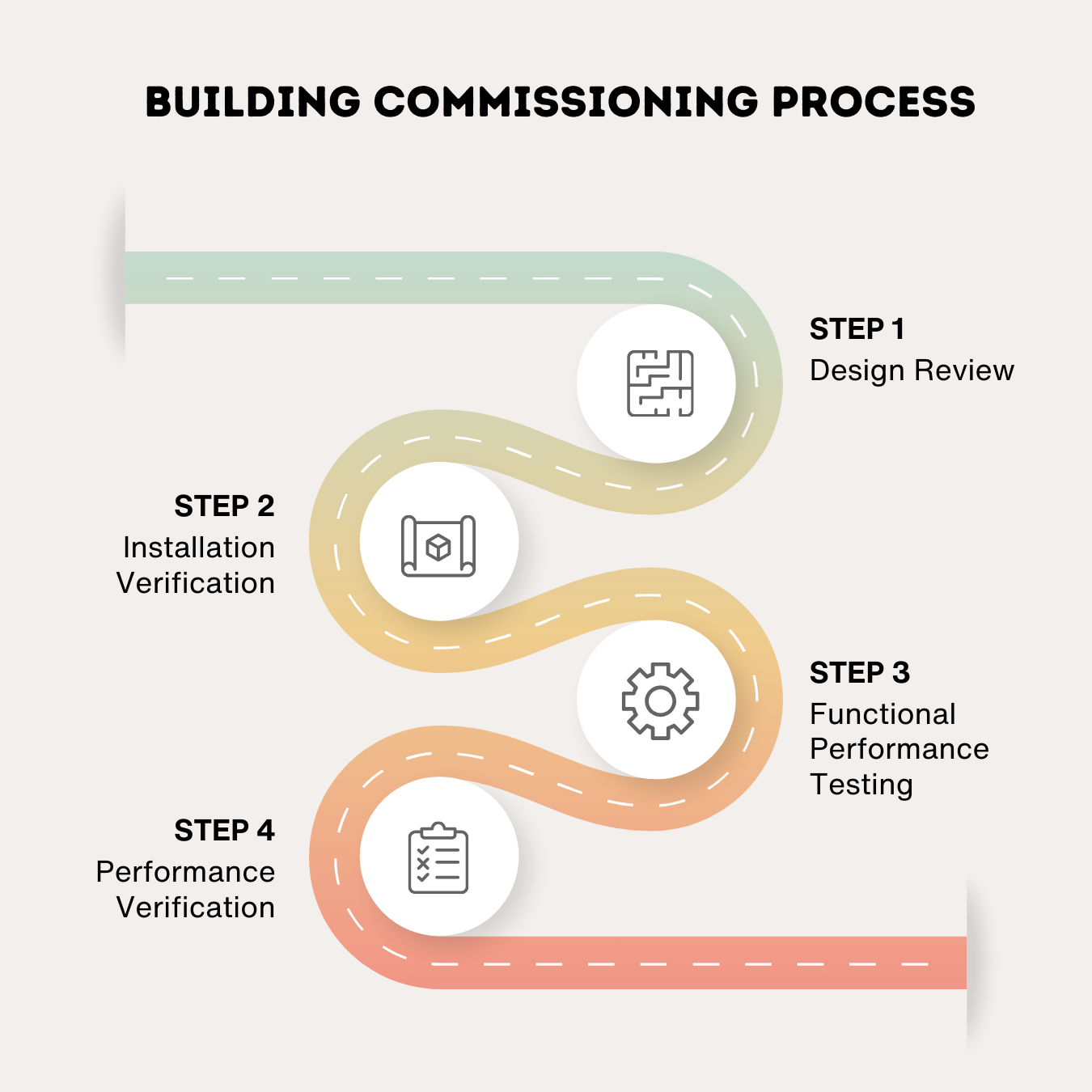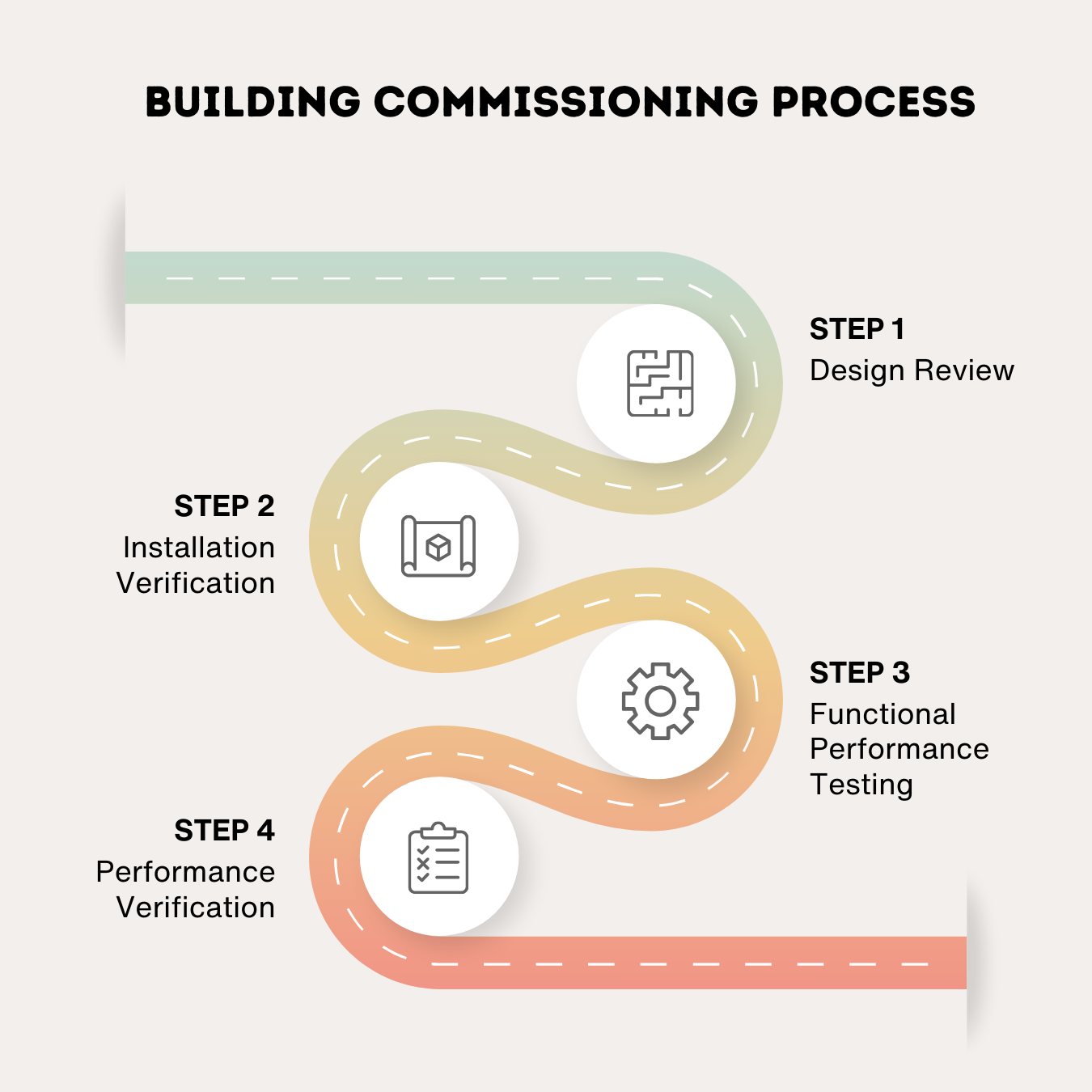Commissioning is a critical aspect of construction projects, ensuring that systems and components are designed, installed, and tested to meet the Owner’s Project Requirements (OPR). Effective project management during commissioning is essential for achieving optimal performance and meeting sustainability goals. As a commissioning provider, it is imperative to have a clear understanding of the OPR in the pre-design phase so that the major milestones of commissioning project management can be executed effectively. In this blog post, we’ll explore best practices in commissioning project management, with a focus on tracking milestones, monitoring the commissioning process, and leveraging dashboards for efficient management.
Tracking Commissioning Milestones
Tracking commissioning milestones is crucial for keeping the project on schedule and ensuring that all systems are commissioned in a timely manner. Complexities such as LEED certifications, multi-facility projects, and supply chain lead time impact milestones so it is recommended to stay flexible while maintaining structure. As a commissioning provider, consider implementing the following best practices:
a. Define Clear Milestones: Core commissioning milestones should be defined early. For example, design review, installation verification, functional testing, and performance verification. This provides a roadmap for the entire commissioning process.

b. Utilize Project Management Software: Adopt project management software to create and monitor a detailed timeline of commissioning milestones. This enables real-time tracking, identifies potential delays, and allows for quick adjustments.
c. Regular Progress Meetings: Conduct regular progress meetings with the major stakeholders of the project team to review, update, and potentially modify the timeline of commissioning milestones. This fosters collaboration and ensures everyone is aligned with the project’s goals. Ideally these meetings should be planned and documented within the Cx project management software.
Tracking Commissioning Process
Effectively tracking the commissioning process is essential for identifying issues early and ensuring that systems are functioning as intended. Here are some best practices:
a. Documenting Procedures: Develop and document detailed commissioning procedures for each system. This documentation serves as a reference for the commissioning team and provides a basis for troubleshooting. Within CxAlloy, the File Line Type has the ability to include documents in reference to a specific line that is requested. This enhances the utilization and storage of critical reports such as Testing and Balancing, Equipment Start-up, and Megger tests.
b. Real-time Monitoring: Use advanced monitoring systems to track system performance and project status in real-time. This allows for immediate identification of deviations from expected performance and facilitates quick corrective actions. For example, interactive dashboards can incorporate day-over-day progress which allows you to specify by trade. If unexpected delays impact a trade with open issues and address them, the dashboard will then automatically adjust and allow stakeholders to modify any dependencies.
c. Quality Assurance Inspections: Conduct regular quality assurance inspections during the commissioning process to verify that installations meet the specified requirements. This proactive approach helps prevent issues before they escalate. Incorporating checklists and tests is essential for ensuring quality during the building commissioning process. A time-saving approach could involve organizing these checks spatially. For example, implementing location-based tests before final commissioning can streamline the process by minimizing the need for multiple visits to the same location.
Using Dashboards for Commissioning Project Management
Dashboards provide a visual representation of key project metrics, making it easier to track progress and identify trends.
a. Centralized Data: Integrate commissioning data into a centralized dashboard that displays key performance indicators, milestones, and potential issues. This allows for quick decision-making based on real-time information.
b. Customizable Dashboards: Use customizable dashboards that cater to the specific needs of commissioning project management. This ensures that the information presented is relevant and actionable for the project team.
c. Regular Dashboard Reviews: Schedule regular reviews of the dashboard with the project team to discuss progress, identify challenges, and strategize solutions. This collaborative approach promotes transparency and accountability.
Incorporating these best practices into commissioning project management can significantly contribute to the success of construction projects. Whether tracking milestones, monitoring the commissioning process, aiming for LEED certification, or utilizing dashboards, a well-managed commissioning phase ensures that systems operate at peak efficiency, meeting both performance and sustainability goals.






